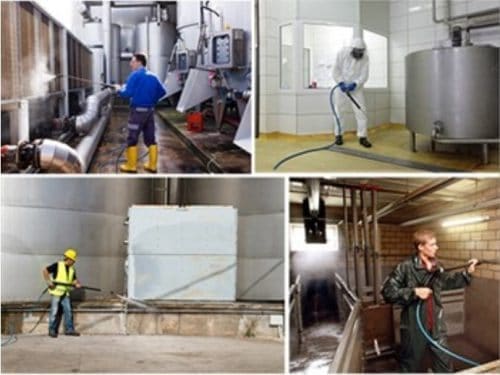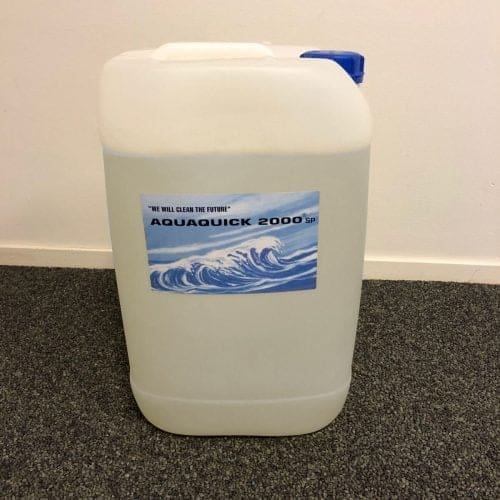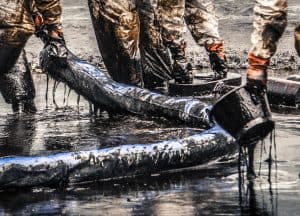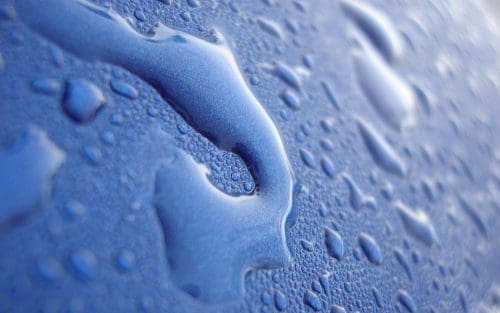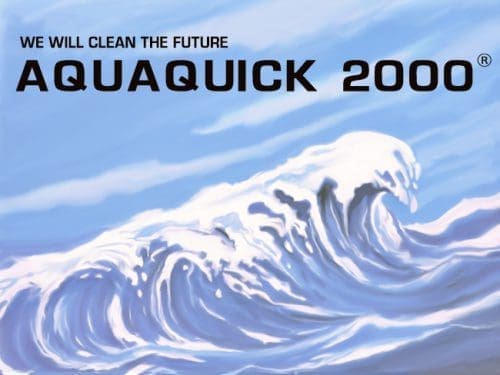Pipeline oil spills pose significant environmental threats, affecting ecosystems, wildlife, and human health. Rapid and effective cleanup is crucial to mitigate the damage caused by such incidents. In this guide, we’ll delve into 10 proven methods for cleaning up pipeline oil spills, ensuring minimal environmental impact and promoting ecosystem recovery.
1. Mechanical Containment and Recovery
Mechanical methods involve deploying booms and skimmers to contain and recover spilled oil. Booms act as barriers to confine the oil, while skimmers remove it from the water’s surface. This method is effective in calm waters and facilitates the collection of large volumes of oil for proper disposal.
2. In-situ Burning
In-situ burning involves igniting the spilled oil, either on water or land, under controlled conditions. This method accelerates oil removal by converting it into less harmful byproducts such as carbon dioxide and water vapor. In-situ burning is suitable for remote areas and can significantly reduce the volume of spilled oil.
3. Chemical Dispersants
Chemical dispersants are applied to the spilled oil to break it down into smaller droplets, enhancing its dispersion in water. This process facilitates microbial degradation and natural dispersion, speeding up the oil’s biodegradation. However, careful consideration of environmental impacts and toxicity is essential when using dispersants.
4. Bioremediation
Bioremediation harnesses the power of microorganisms to degrade oil contaminants naturally. Indigenous microbes are introduced to the affected area to metabolize the oil, converting it into harmless byproducts. This eco-friendly approach promotes ecosystem restoration and minimizes the long-term environmental impact of oil spills.
5. Sorbent Materials
Sorbent materials such as booms, pads, and powders are used to absorb and contain spilled oil. These materials effectively soak up the oil, facilitating its removal from water surfaces and contaminated areas. Sorbents can be made from natural or synthetic materials and are particularly useful for small-scale spills and shoreline cleanup.
6. Vacuum Extraction
Vacuum extraction involves using specialized equipment to suction spilled oil from the water’s surface or contaminated soil. This method is highly efficient in removing oil from hard-to-reach areas and can be tailored to different spill scenarios. Vacuum extraction minimizes environmental disturbance and reduces cleanup time.
7. Hot Water Washing
Hot water washing utilizes heated water jets to dislodge and remove oil from affected surfaces such as rocks, shorelines, and equipment. The combination of heat and pressure enhances the oil’s emulsification, making it easier to remove. Hot water washing is effective for shoreline cleanup and equipment decontamination.
8. Soil Vapor Extraction
Soil vapor extraction is employed to remove oil contaminants from soil by applying a vacuum to extract volatile compounds. This method promotes the evaporation of oil residues and facilitates their capture for proper disposal or treatment. Soil vapor extraction is suitable for addressing subsurface contamination and preventing groundwater pollution.
9. Chemical Oxidation
Chemical oxidation involves the use of oxidizing agents to break down oil molecules into non-toxic compounds. This method accelerates the remediation process by promoting the oxidation of hydrocarbons present in the spilled oil. Chemical oxidation can be applied to soil, water, and sediment to mitigate environmental contamination effectively.
10. Enhanced Natural Attenuation
Enhanced natural attenuation utilizes natural processes such as volatilization, dissolution, and biodegradation to remediate oil-contaminated environments. This approach focuses on enhancing environmental conditions to facilitate the natural attenuation of spilled oil over time. By promoting natural processes, enhanced natural attenuation minimizes human intervention and fosters sustainable remediation outcomes.
How To Do A Proper Pipeline Oil Spill Cleaning?
Cleaning up a pipeline oil spill is a complex and challenging process that requires careful planning, coordination, and the utilization of various techniques. Here’s a step-by-step guide on how to effectively clean up a pipeline oil spill:
Assessment and Planning
- Immediately upon discovering the spill, assess the extent of the damage and potential risks to human health and the environment.
- Gather information about the spilled oil, including its volume, type, and properties, to determine the appropriate cleanup methods.
- Develop a comprehensive cleanup plan that considers factors such as the spill location, weather conditions, sensitive ecosystems, and regulatory requirements.
Containment
- Deploy containment booms or barriers to prevent the spread of the spilled oil and confine it to a manageable area.
- Ensure that the booms are properly positioned and anchored to effectively contain the oil and prevent it from reaching shorelines, water intakes, or sensitive habitats.
Mechanical Recovery
- Use skimmers, vacuum trucks, or other mechanical equipment to recover the spilled oil from the water’s surface.
- Deploy sorbent materials such as pads, socks, or powders to absorb and collect the oil from the surface and shorelines.
- Continuously monitor and adjust the recovery efforts to optimize the collection of spilled oil while minimizing environmental impacts.
Utilize In-situ Burning
- Consider the use of in-situ burning as a method to rapidly remove large quantities of spilled oil from the water’s surface.
- Conduct controlled burns under favorable weather conditions and in accordance with regulatory guidelines to minimize air pollution and safety risks.
- Monitor the burning process closely and extinguish the fire once the majority of the oil has been consumed.
Chemical Dispersants
- Assess the feasibility of using chemical dispersants to break down the spilled oil into smaller droplets and enhance its dispersion in the water column.
- Apply dispersants strategically to areas where mechanical recovery is challenging or ineffective, taking into account environmental factors and potential risks to aquatic life.
- Monitor the effectiveness of dispersant application and adjust the dosage and timing as needed to optimize oil dispersion and biodegradation.
Bioremediation
- Consider employing bioremediation techniques to enhance the natural degradation of the spilled oil by indigenous microorganisms.
- Introduce bioaugmentation agents or nutrients to stimulate microbial activity and accelerate the breakdown of hydrocarbons present in the oil.
- Monitor microbial populations and environmental conditions to ensure optimal bioremediation performance and assess the progress of oil degradation over time.
Shoreline Cleanup
- Implement shoreline cleanup measures to remove oil deposits from beaches, marshes, and other sensitive coastal habitats.
- Use manual methods such as shoveling, raking, or pressure washing to remove oil-contaminated sediment and debris from shorelines.
- Deploy sorbent materials and specialized equipment to capture and remove oil from intertidal zones and rocky coastlines.
Monitoring and Assessment

- Conduct regular monitoring of water quality, air emissions, and ecological indicators to assess the effectiveness of cleanup efforts and detect any lingering environmental impacts.
- Collect samples of water, sediment, and biota for laboratory analysis to evaluate the extent of contamination and track the progress of ecosystem recovery.
- Engage stakeholders and regulatory agencies in the monitoring and assessment process to ensure transparency and compliance with cleanup objectives and regulatory requirements.
Restoration and Remediation
- Develop a restoration and remediation plan to address any long-term impacts of the oil spill on affected ecosystems and communities.
- Implement habitat restoration projects, such as wetland reclamation or shoreline stabilization, to enhance ecosystem resilience and promote natural recovery processes.
- Provide compensation and support to affected communities, industries, and individuals impacted by the oil spill, including financial assistance, health services, and livelihood restoration programs.
Documentation and Lessons Learned
- Maintain detailed records of cleanup activities, including data on spill response operations, environmental monitoring results, and stakeholder communications.
- Conduct post-spill evaluations to identify lessons learned, best practices, and areas for improvement in spill response preparedness and environmental management.
- Share findings and recommendations with industry partners, government agencies, and the public to enhance future spill response efforts and minimize the risk of similar incidents.
By following these steps and utilizing a combination of containment, recovery, treatment, and monitoring techniques, pipeline operators and response teams can effectively clean up oil spills and mitigate their environmental impact. Collaboration, innovation, and ongoing vigilance are essential for achieving successful outcomes and safeguarding ecosystems and communities from the consequences of pipeline oil spill.
Why Pipeline Oil Spills Must Be Cleaned Up?
Pipeline oil spills represent a significant environmental and human health hazard, necessitating prompt and thorough cleanup efforts. These incidents can have far-reaching consequences, impacting ecosystems, wildlife, local economies, and the well-being of communities. Here’s why cleaning up pipeline oil spills is imperative:
- Environmental Impact: Pipeline oil spills pose a grave threat to natural habitats, including rivers, wetlands, forests, and marine ecosystems. Oil contamination can smother vegetation, coat wildlife, and disrupt delicate ecological balances. Cleanup is essential to minimize long-term damage to biodiversity and ecosystem functions.
- Water Quality: Spilled oil can contaminate surface water and groundwater sources, compromising water quality and endangering aquatic life. Cleanup efforts aim to prevent the spread of oil and restore water bodies to their pre-spill condition, safeguarding drinking water supplies and preserving aquatic habitats.
- Wildlife Protection: Pipeline oil spills pose a direct threat to wildlife, including birds, fish, mammals, and marine organisms. Oil can coat feathers and fur, impairing animals’ ability to regulate body temperature and leading to suffocation or poisoning. Cleaning up spills helps rescue and rehabilitate affected wildlife and prevent further harm to vulnerable species.
- Public Health: Pipeline oil spills can release harmful chemicals and volatile organic compounds into the air, posing risks to public health and safety. Cleanup activities aim to minimize exposure to toxic substances and protect nearby communities from respiratory problems, skin irritation, and other health issues associated with oil contamination.
- Economic Consequences: Pipeline oil spills can have devastating economic repercussions for local communities, businesses, and industries dependent on affected natural resources. Cleanup efforts help mitigate economic losses by restoring ecosystems, supporting tourism and recreational activities, and preserving the livelihoods of those impacted by the spill.
- Long-Term Environmental Legacy: Failure to adequately clean up pipeline oil spills can result in persistent contamination and long-term environmental degradation. Oil residues can persist in soil, water, and sediments for years, posing ongoing risks to ecosystems and human health. Effective cleanup is essential to prevent lasting damage and ensure environmental sustainability.
- Legal and Regulatory Compliance: Pipeline operators are legally obligated to respond promptly to oil spills and mitigate their environmental impact in accordance with regulatory requirements. Failure to comply with cleanup standards can result in fines, legal action, and reputational damage for responsible parties. Cleaning up spills promptly and thoroughly is essential to meet regulatory obligations and uphold environmental stewardship principles.
- Social Responsibility: Pipeline operators have a moral and ethical responsibility to minimize the environmental and social impact of their operations, including responding effectively to oil spills. Cleaning up spills demonstrates a commitment to environmental stewardship, community engagement, and corporate social responsibility, fostering trust and goodwill among stakeholders.
- Preventing Secondary Impacts: Oil spills can trigger secondary impacts such as soil erosion, habitat loss, and increased susceptibility to invasive species. Prompt cleanup efforts help prevent these secondary impacts from exacerbating the environmental damage caused by the spill, preserving ecosystem resilience and supporting ecological recovery.
- Mitigating Climate Change: Oil spills release greenhouse gases such as carbon dioxide and methane, contributing to climate change and exacerbating global environmental challenges. Cleaning up spills helps mitigate these climate impacts by minimizing the release of greenhouse gases and preventing further degradation of natural carbon sinks such as forests and wetlands.
Cleaning up pipeline oil spills is essential to protect ecosystems, safeguard public health, support local economies, and fulfill legal and moral obligations. By responding promptly and effectively to spills, we can mitigate their environmental and social impact, preserve natural resources, and promote a sustainable future for generations to come.
How To Cleanup a Pipeline Oil Spill With AQUAQUICK 2000?

AQUAQUICK 2000 offers a revolutionary solution for cleaning up pipeline oil spills effectively and efficiently. With its advanced formulation and versatile application, AQUAQUICK 2000 provides several key benefits in spill remediation efforts.
Firstly, AQUAQUICK’s powerful surfactants penetrate and emulsify oil, breaking it down into smaller droplets for easier removal from water surfaces, sediments, and soil. This facilitates rapid cleanup and minimizes the spread of oil contamination.
Secondly, AQUAQUICK’s environmentally friendly formula is biodegradable and non-toxic, ensuring minimal harm to aquatic life and ecosystems during cleanup operations. Its eco-friendly properties make it a preferred choice for sensitive environmental habitats and protected areas.
Additionally, AQUAQUICK’s versatility allows for a wide range of applications, including oil spill response, equipment decontamination, and shoreline cleanup. Its effectiveness in various scenarios makes it a valuable tool for emergency response teams and environmental agencies tasked with mitigating the impact of pipeline oil spills.
In summary, AQUAQUICK 2000 offers a safe, efficient, and environmentally friendly solution for cleaning up pipeline oil spills, helping to protect ecosystems, wildlife, and communities from the devastating effects of oil contamination.
Conclusion
Effective cleanup of pipeline oil spills requires a combination of mechanical, chemical, and biological methods tailored to specific spill scenarios. By employing these 10 proven techniques, environmental authorities and cleanup crews can mitigate the environmental impact of oil spills and promote ecosystem recovery. It is crucial to prioritize environmentally sustainable approaches while addressing the challenges posed by pipeline oil spills, ensuring a healthier and more resilient environment for future generations.



